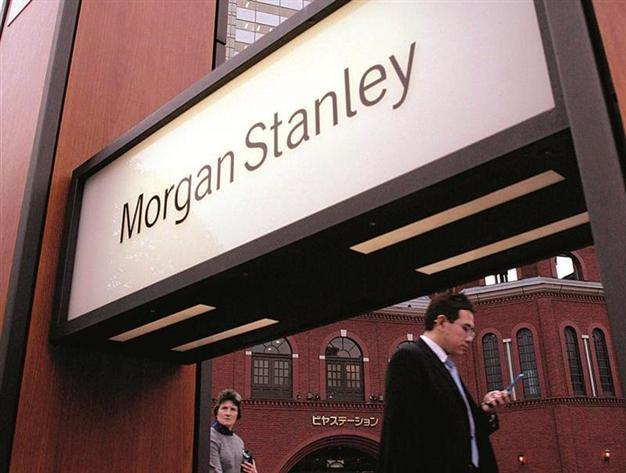US banks paint a mixed picture
NEW YORK - Agence France-Presse

This file photo shows Morgan Stanley corporate sign in front of the company’s Japan headquarters Tokyo. EPA photo
Earnings released in recent days by leading banks and other large financial institutions might be thought of as the good, the bad and the ugly.
On one side, banks like
Goldman Sachs, Morgan Stanley and JPMorgan Chase zoomed ahead with earnings that either set new records, beat expectations or accomplished both of those things.
But those positives were countered by results from Citigroup and Bank of America that were dominated by messy charges for legal costs and feeble profits.
Still another model was given by Wells Fargo, which reported record profits but disappointed the markets because its earnings underscored the drag of low interest rates on company earnings.
In spite of all these mixed signals, some observers see progress in the overall performance of the banking sector, one that follows a similar trajectory to the economy as a whole.
“The losses have been coming down as the economy has been stabilizing,” said Marty Mosby, an analyst at Guggenheim Partners.
Still, some remain cautious about the prospects for the sector given how inextricably it is tied to the overall health of the US economy.
That was the conclusion of a report issued this week by Standard & Poors, which sees a mixed bag in terms of the macro picture. The housing market and consumer spending may have stabilized, but there is evidence that some businesses postponed spending due to the fiscal cliff debate, S&P said.
“In the medium term, a challenge facing the sector is muted asset growth and sustained margin compression in the low interest rate environment,” S&P said.
Bank of America’s earnings were dominated by massive charges relating to its settlements with U.S. regulators over mortgages during the housing bust and its foreclosure processes. Analysts also hit at the bank for high expenses. But even with those problems, Mosby noted that Bank of America produced 2012 profits of 25 cents per share, up from the one-cent gain in 2011 and better than the 37-cent loss in 2010.
Hopeful of futureBank of America argues that it has put many of it biggest problems behind it and is well-prepared for better conditions.
Citigroup, which, like Bank of America, was hard-hit by the housing bust, also continued to demonstrate the drag from its legacy operations. Citi caught markets by surprise with news of $1.3 billion in legal and legal-related expenses that helped account for a large miss in its earnings compared with forecasts.
Citi reported year-end 2012 profits of $7.5 billion, down from the 2011 level of $11.1 billion.
Marc Pado, US market strategist at DowBull, a San Francisco-based investment consulting firm, said the banks employed a “throw it all in” approach to bad news in the fourth quarter.
That way, next year’s books will not be saddled with weak results. The hope is that business conditions are better in 2013.
JPMorgan Chase also took this tack regarding its effort to move past the humiliating $6 billion trading loss in 2012 related to the London “whale.” JPMorgan released a 129-page report outlining the mistakes behind the loss. The bank also announced that it was slashing chief executive Jamie Dimon’s bonus for 2012 by 50 percent due to the scandal. The drama surrounding the “whale” overshadowed JPMorgan Chase’s earnings, which breached new records for the bank and bested expectations by a wide margin. JPMorgan reported 2012 earnings of $21.3 billion, up from $19 billion in 2011.
Perhaps the best report of the week came from Goldman Sachs, which beat earnings forecasts by a wide margin as it reported solid results in fixed-income sales and trading and investment banking. Goldman profits rose from $2.5 billion in 2011 to $7.3 billion in 2012.
JP Morgan Chase,
